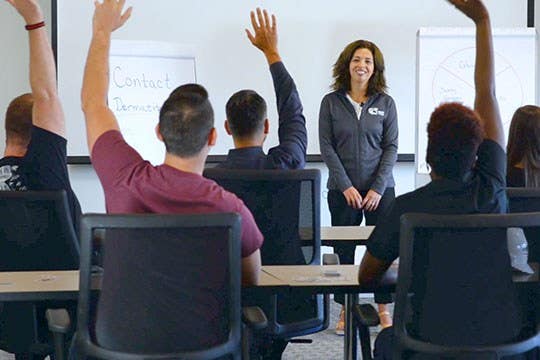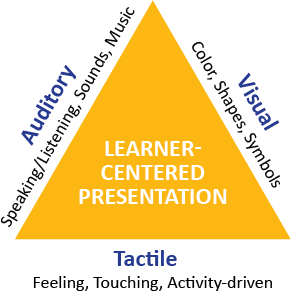
11 Ways to Make Safety Meetings Fun
Safety First isn't just a saying - it frames everything you do. Safety training is the most efficient way to teach everyone the same lessons and get your whole workforce on the same page. But it can be too easy for classes to come off as stale and boring, tempting team members to forget the lessons as soon as they walk out the door. It can also be a challenge to present valuable information in ways that every learner can understand and relate to.
We’ve got some fresh and fun ways you can spruce up your training techniques so workers leave your sessions engaged, empowered, and equipped with the skills needed to do the job.
Keep Safety Meetings Short & Segmented
Avoid having your workforce in training for hours at a time. Instead, break up safety training activities among multiple days, and segment sessions into informative portions and games requiring your employees to practice or recall what they just learned.
Account for Different Learning Types - Auditory, Visual, Tactile
Before you choose a training technique, understand that your workforce is likely made up of learners who respond better to different mediums. Make sure your training sessions offer something for everyone with lots of variety to keep training fun and interesting.

For workers to retain information, you have to offer a combination of techniques.

Ideas to Keep Workers Engaged in Safety Talks
Mix and match these safety training ideas to find which approach is best for your work environment and satisfies different learners. Once you’ve figured out which approaches work best for your facility, rotate activities to keep training fresh and engaging so safety is always top-of-mind for your workers.
Keep it fun! Improve any slides you may be using by adding fun images of what not to do or engaging videos to help break up a lecture.
Try a game like “safety bingo” or “spot the hazard.” Hand out prizes like branded t-shirts or points that add up and can be cashed in for a bigger prize at the end of training.
Divide students up into small groups. Give them a workplace scenario and ask them as a group to outline the proper safety procedures and PPE that should be used to prevent an injury.
Share a real-life example. Have an experienced worker discuss a mistake he/she made that led to an injury or a situation where proper PPE prevented an injury.
![]()
Bring in experienced or retired workers and let the newbies pick their brain.
![]()
![]()
Let an experienced peer lead the training session. People like to hear from those who work alongside them.
![]()
![]()
Allow workers to train with veterans across all workplace applications or shadow a veteran as they do their job. This can help young workers get a broader understanding of how their job can impact other jobs.
![]()
Offer rewards to your veterans for putting up with the newbie tag-alongs!
Use your facility as a stage and let your workers be the actors. Simulate a potential hazardous situation and walk through the Dos and Don’ts.
Divide students up into small groups. Give them a workplace scenario and ask them as a group to outline the proper safety procedures and PPE that should be used to prevent an injury.
Leave the classroom and hit the production floor. Let workers see the practices and procedures you’ve been training them on in real-time.
Before you start training, test your workers’ knowledge with a fun quiz! Give away little prizes to encourage participation. Ask review questions at the end of each topic you cover. Make it a fun competition. Use a site like kahoot.com to make the review interactive!
Take a QuizLet workers put PPE through the wringer. Allow them to hammer a steel toe boot or cut through a non-cut-resistant material and a cut-resistant material with a razor or scissors to see the difference.
Mix and match any of these ideas and create different obstacles throughout your facility aimed at testing a worker’s knowledge. Have a ceremony at the end to celebrate the winners.
Presentations
Unlock our helpful safety training presentations and start using them today!
Download PresentationsWatch Videos
Use fast and fun safety videos to liven up your classes or to send to workers as anytime reminders!
Get the Videos






